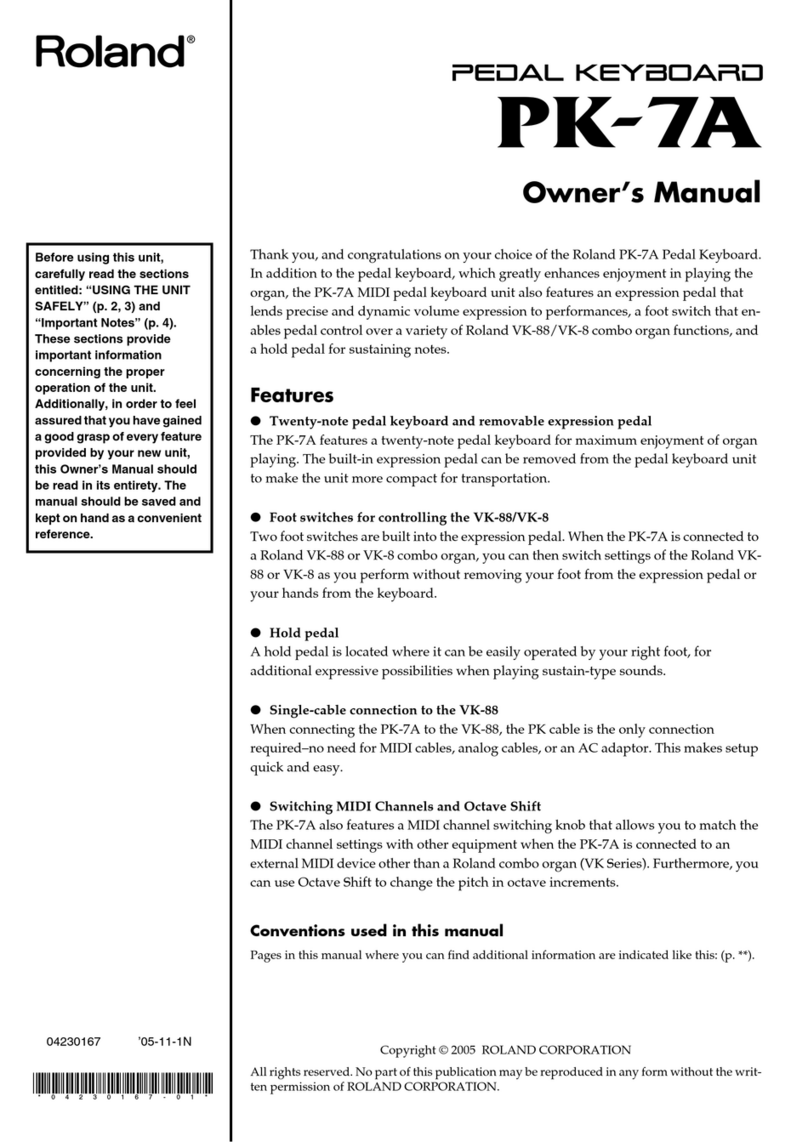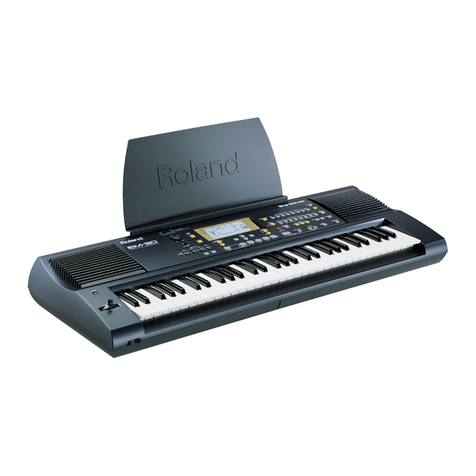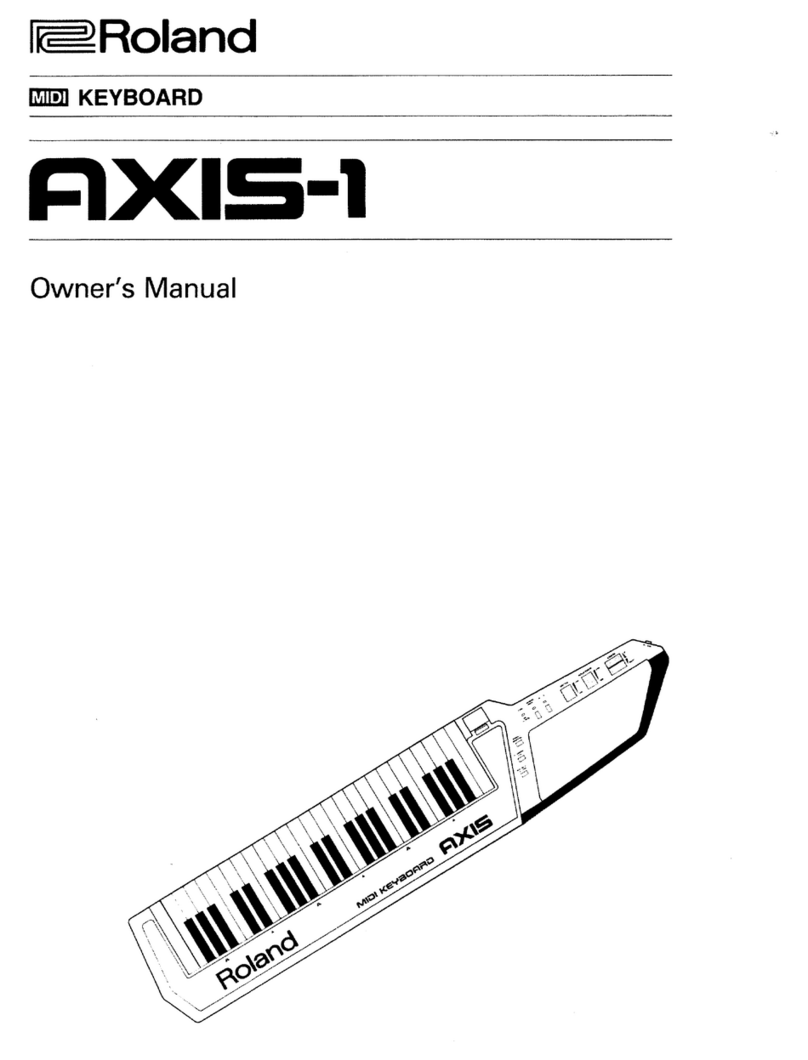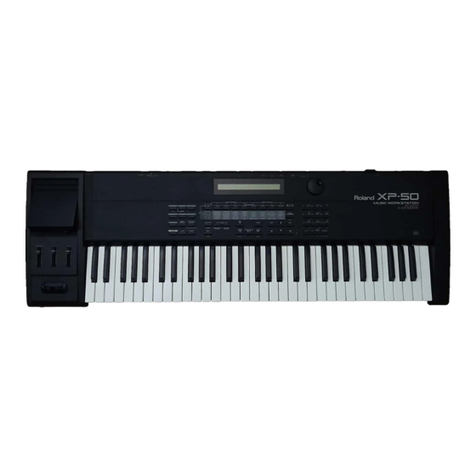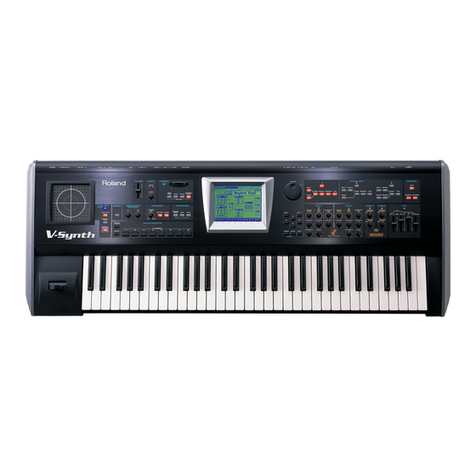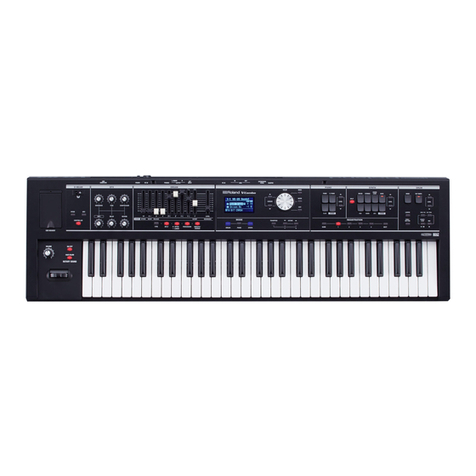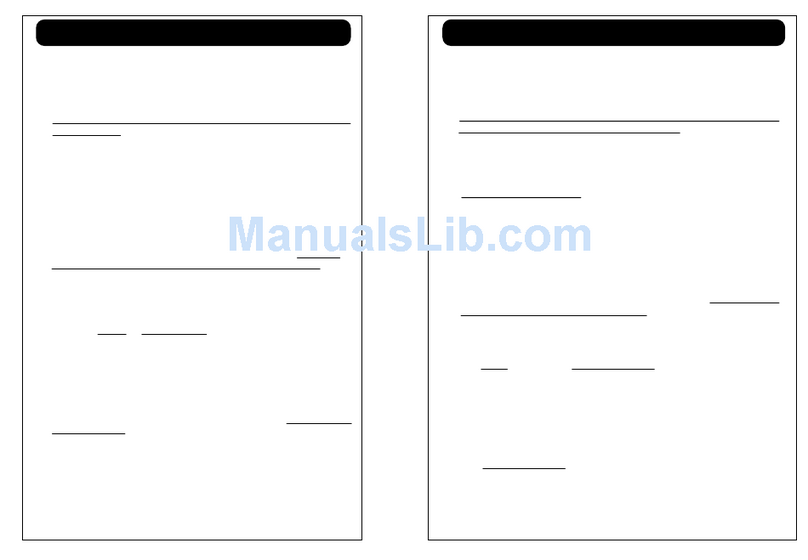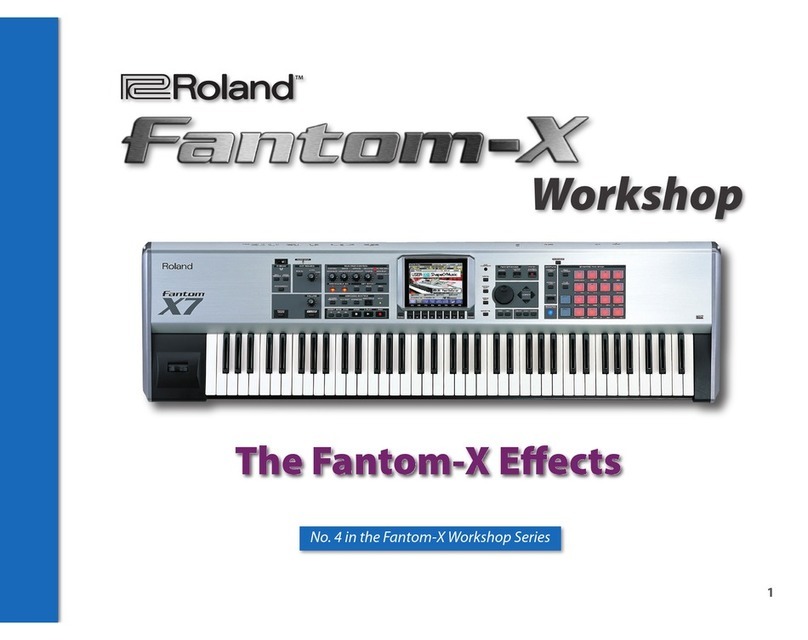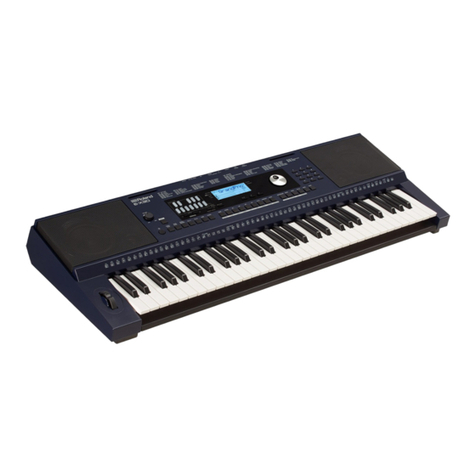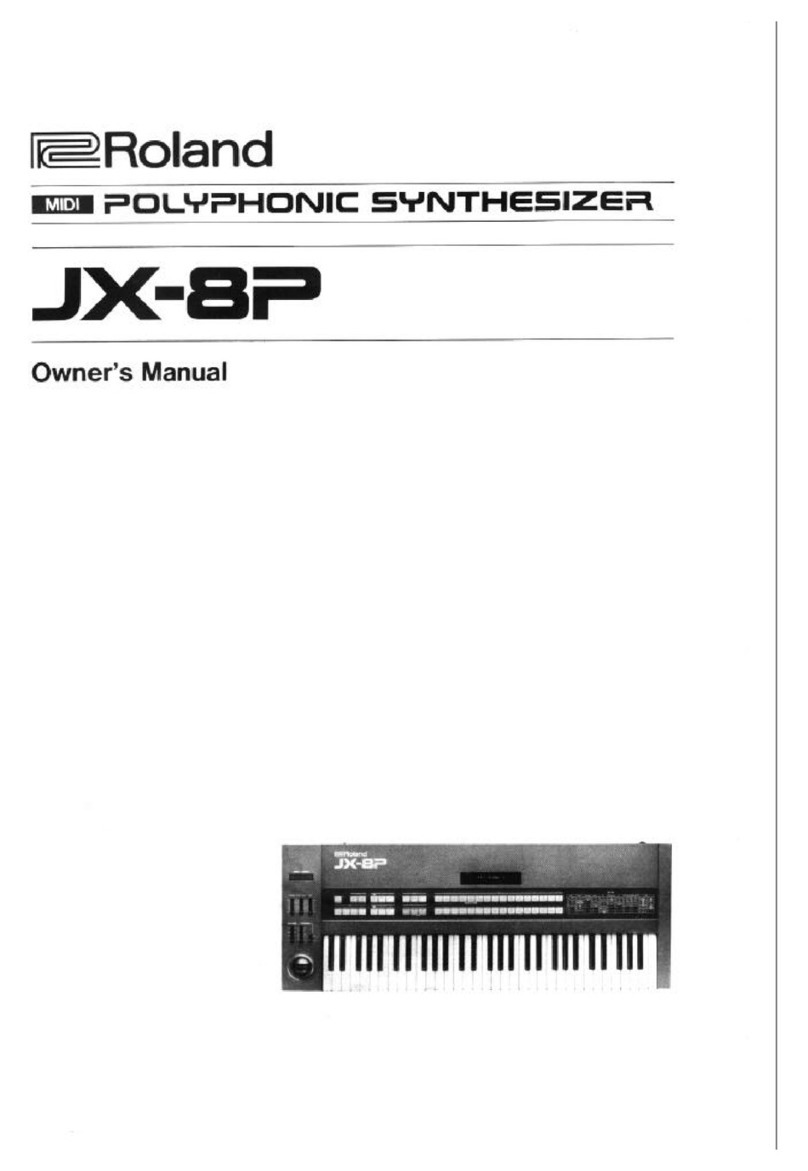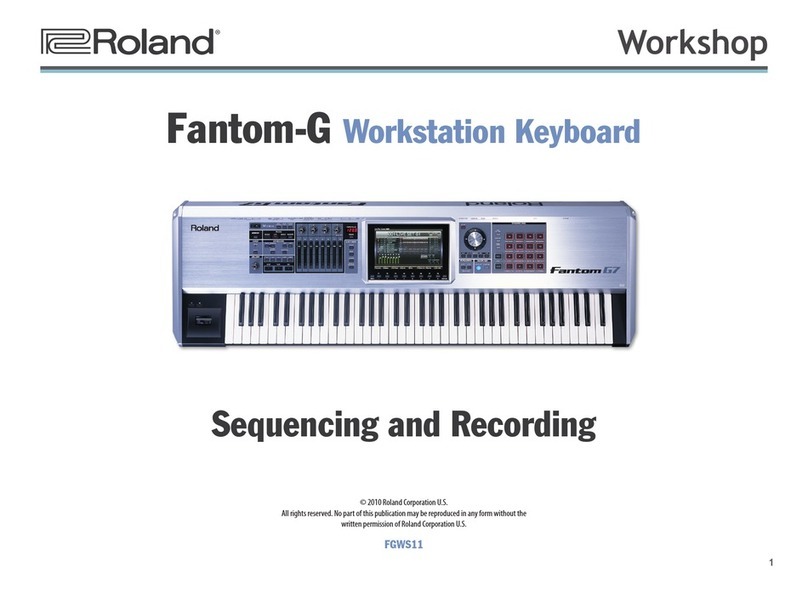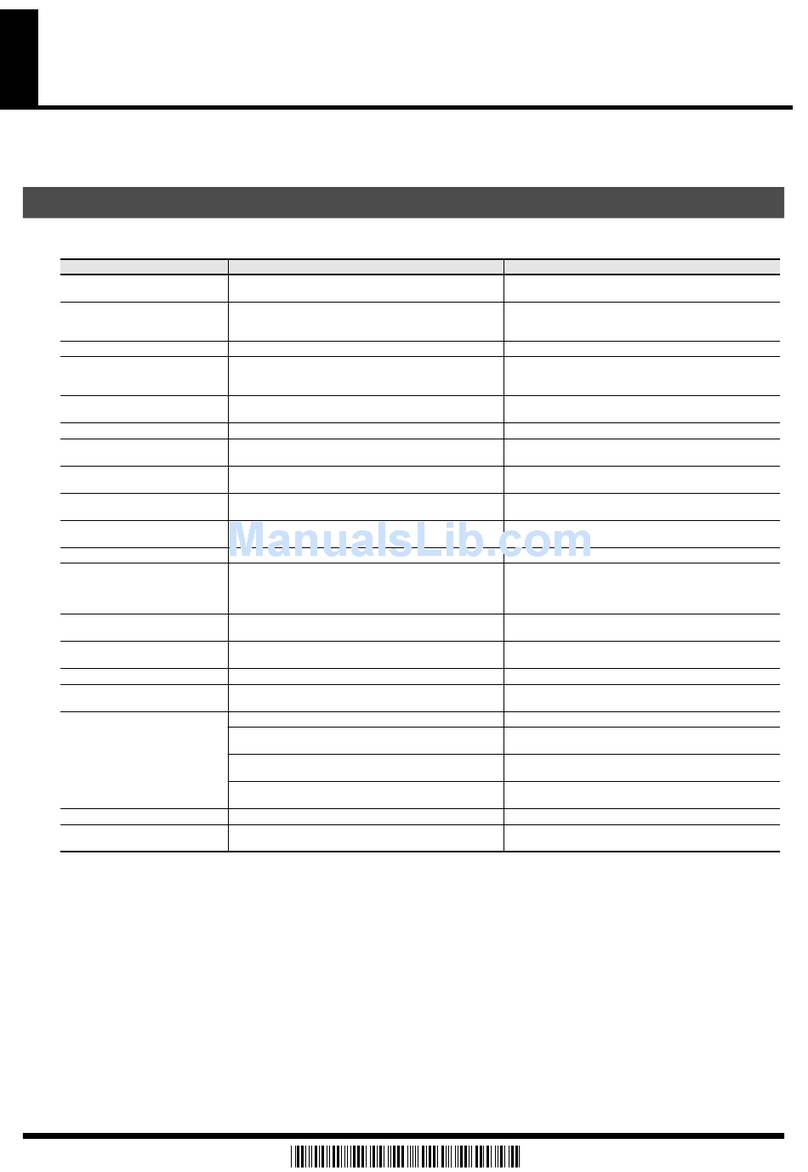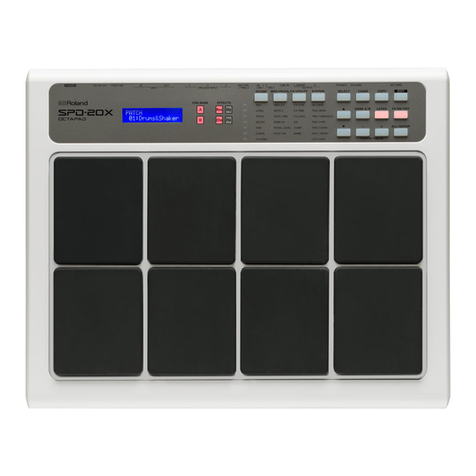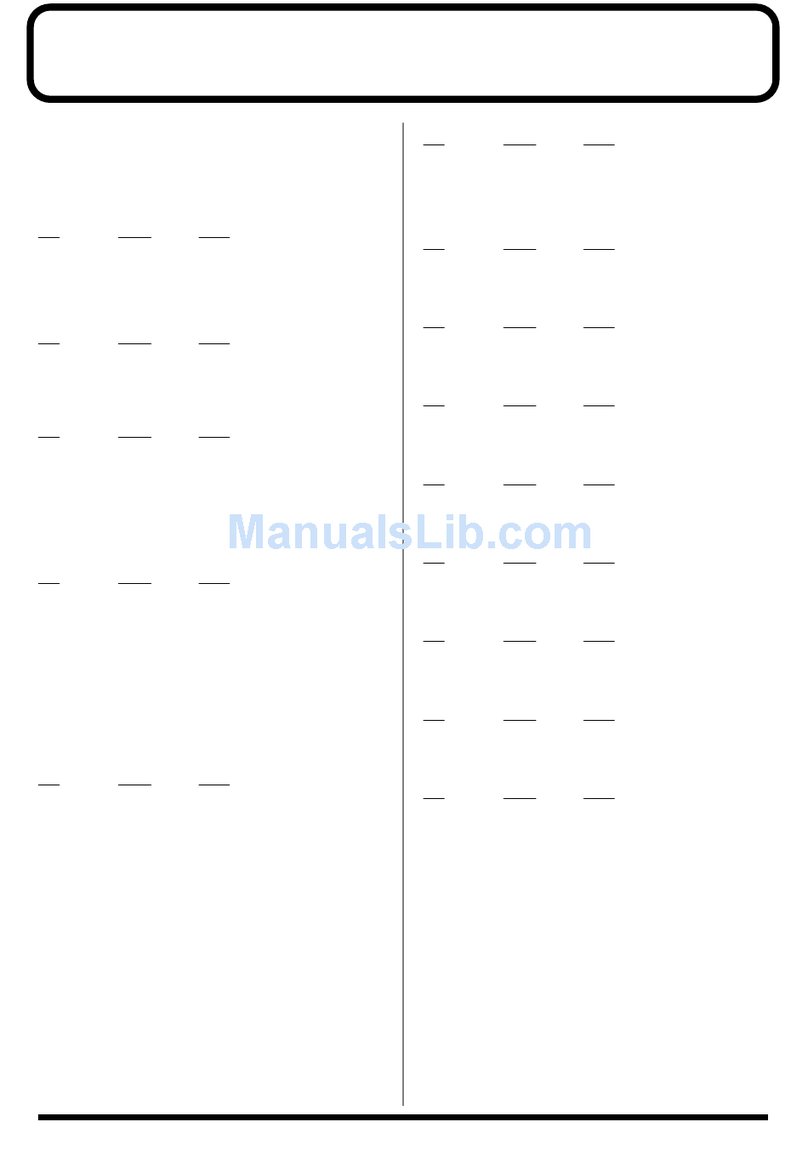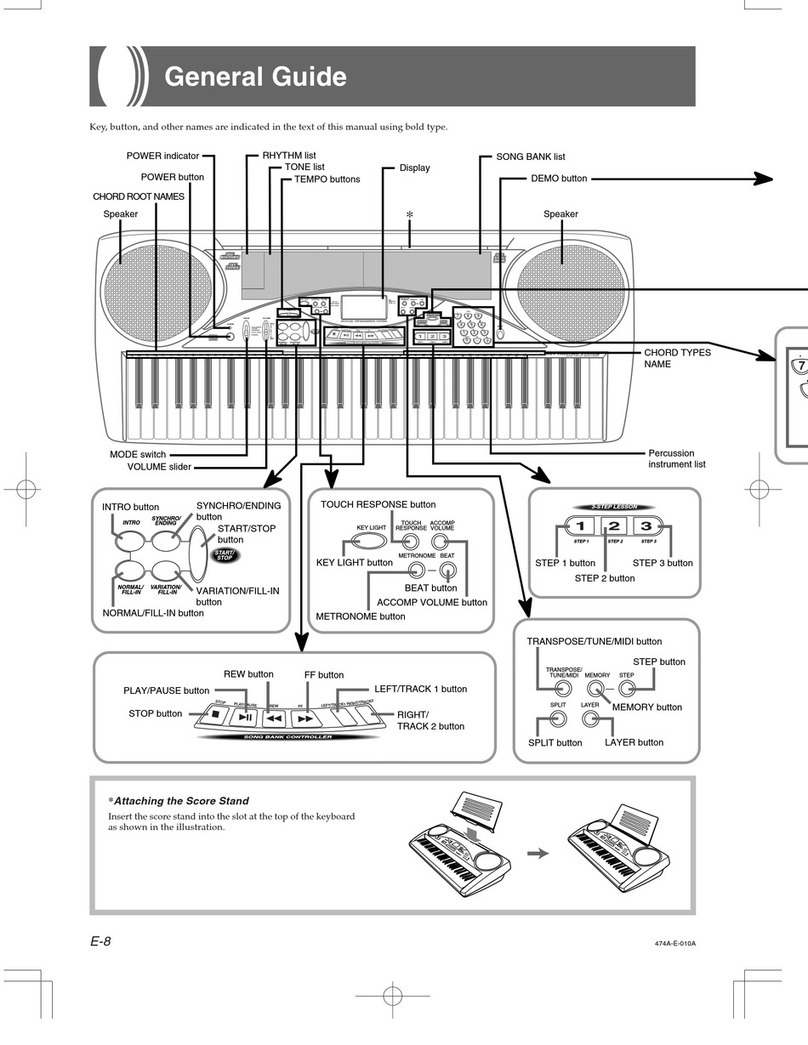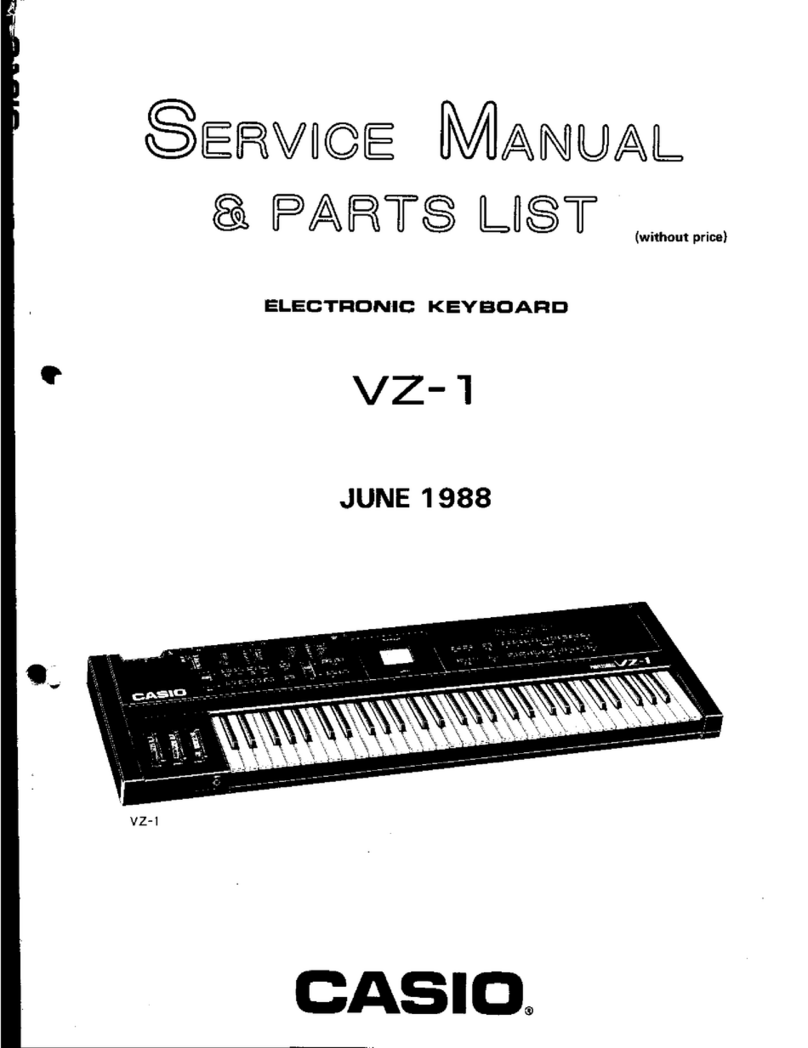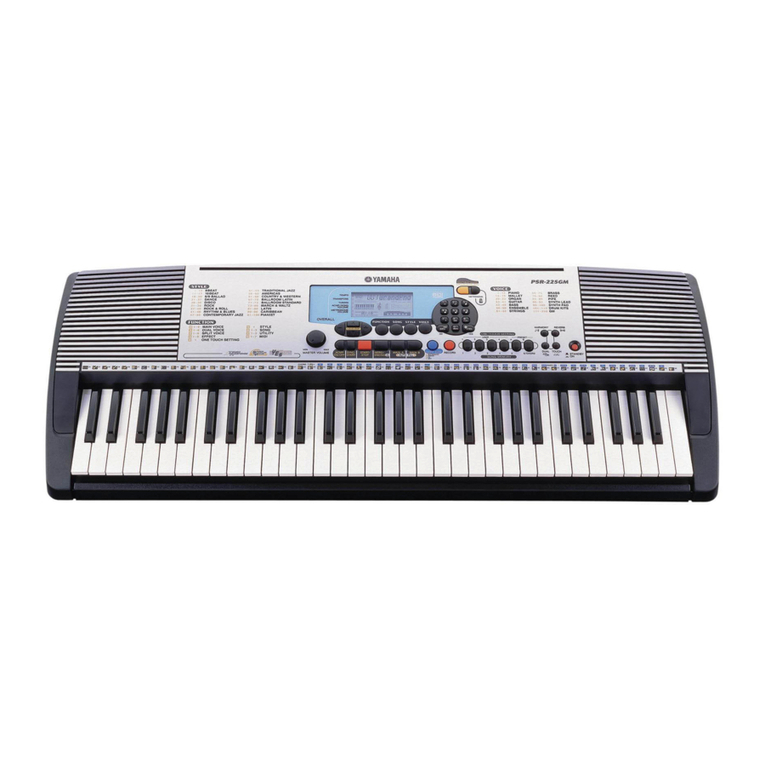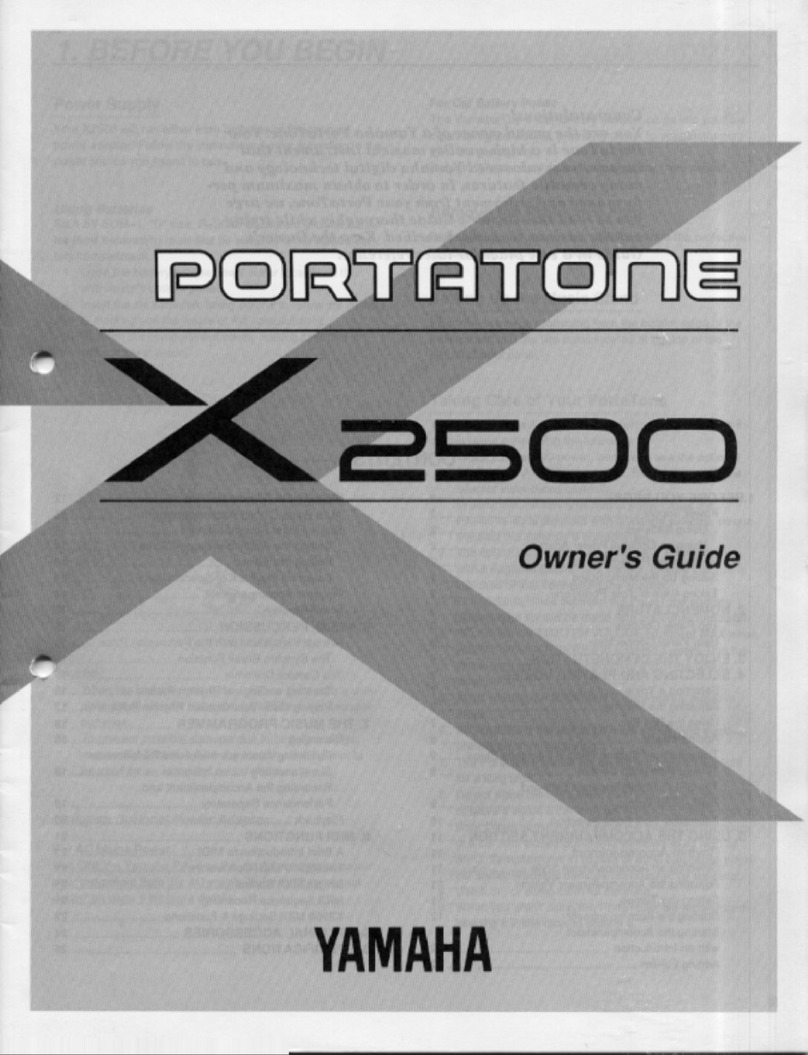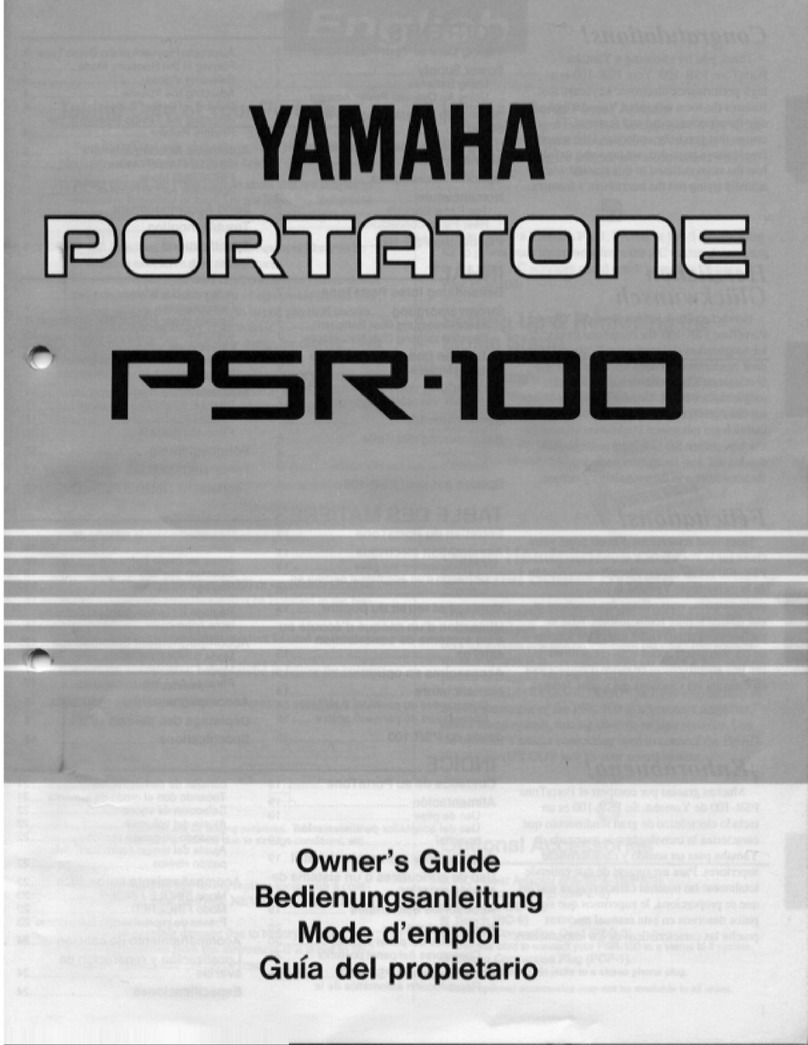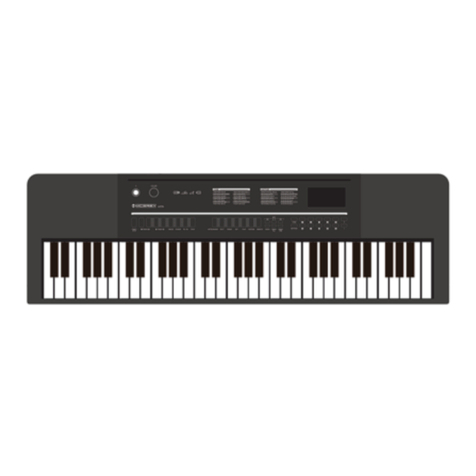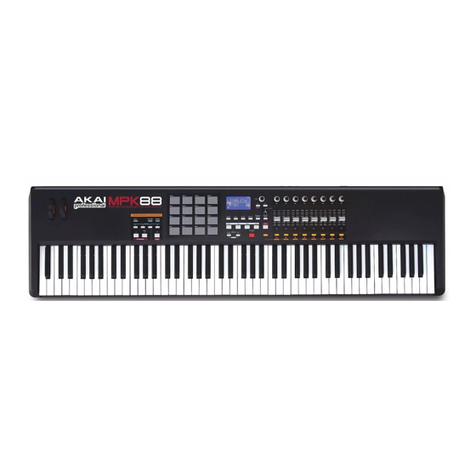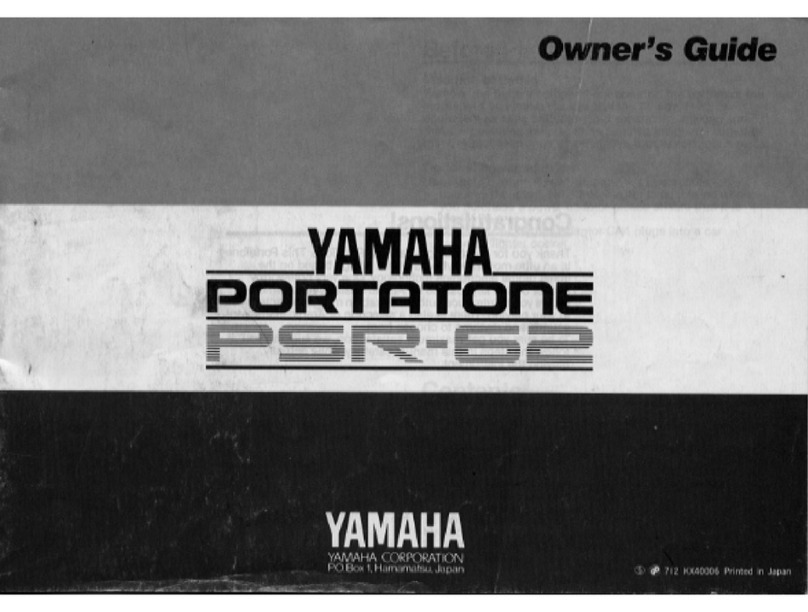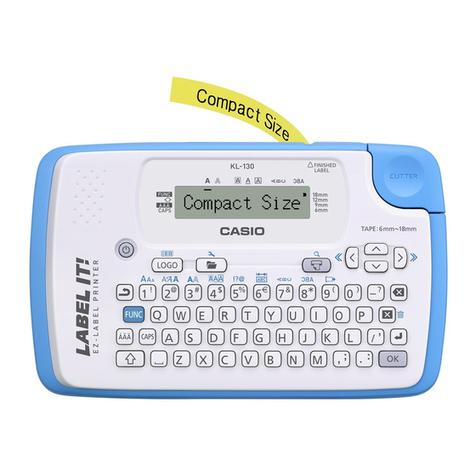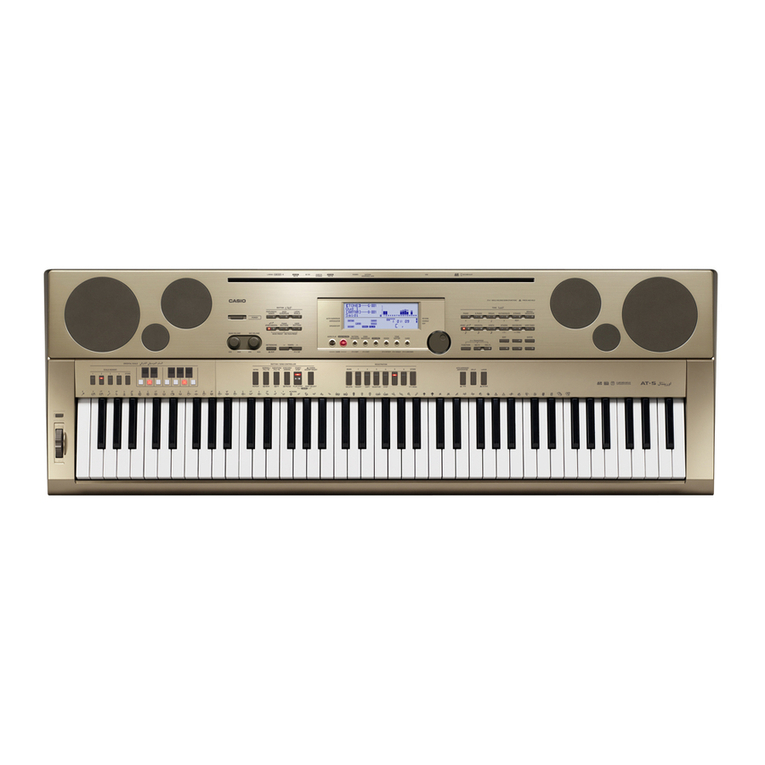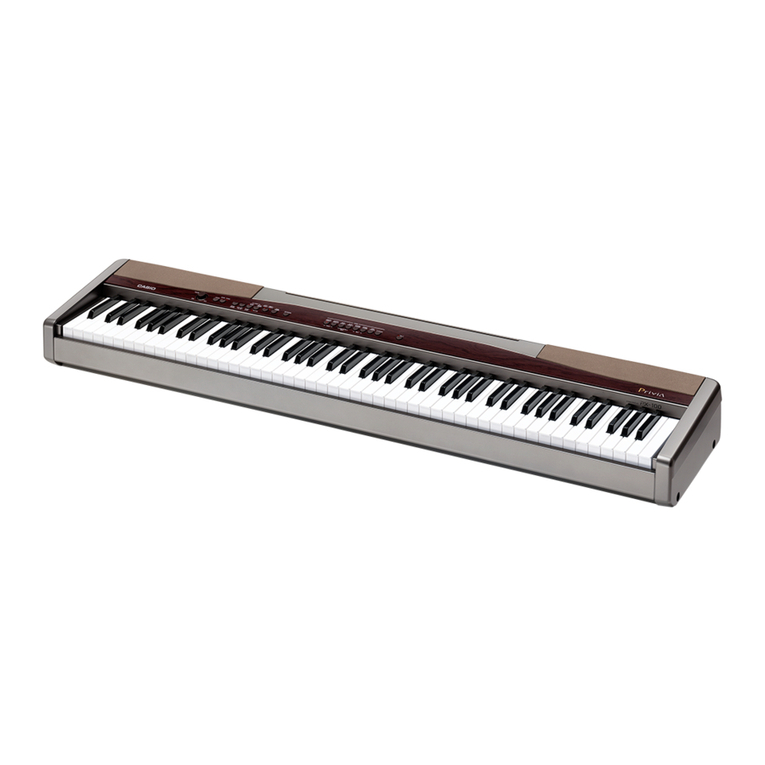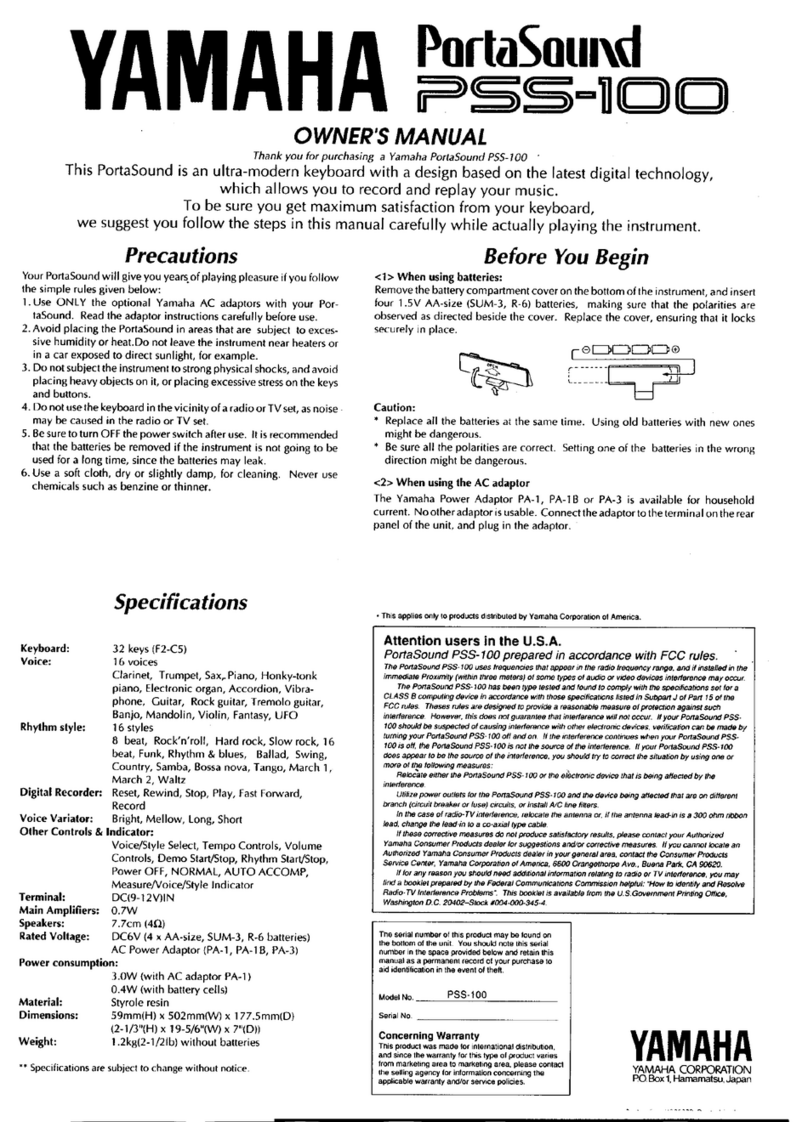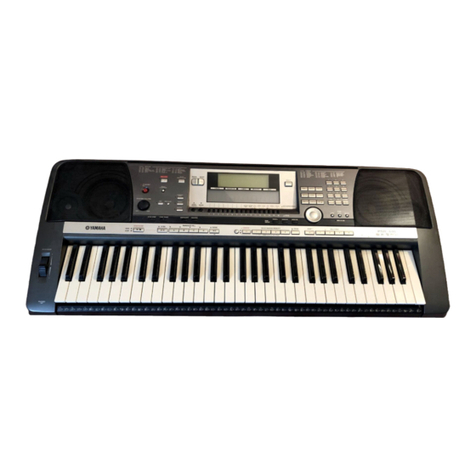8
8. To set up the compressor bands, select and adjust each
band’s parameters as desired:
• ATTACK—sets the speed at which compression begins
when a signal exceeds the Threshold value.
• RELEASE—sets the length of time for which compression
remains in effect after a signal exceeds the Threshold
level.
• THRESHOLD—sets the level above which compression
is applied to the signal.
• RATIO—sets the amount of compression, with higher
values resulting in more extreme compression.
• LEVEL—sets the overall level of the individual
compression band.
Since you can set the volume of each frequency range with its LEVEL
parameter, you can tweak the overall frequency balance of your mix using
the mastering effect.
You can save your settings as the mastering effect’s user preset. To do so,
press F7 (System Write). Once stored, you can apply your user settings to
any mix by pressing F6 (User.) The mastering effect’s settings exist on their
own—they don’t belong to any patch, rhythm set or performance.
Using Arpeggios in a Song
The Fantom-X has a built-in arpeggiator for playing a repeating
series of notes. Each of these series is called an “arpeggio,” or
more officially in the Fantom-X, an “arpeggio style.” There are
128 preset arpeggio styles, and you can store up to 128 of
your own. The arpeggiator can be used in either Patch mode
or Performance mode.
When you play the keyboard, the currently selected arpeggio
style uses notes you hold down as the basis for the note series
it produces.
Arpeggiator Styles and the Arp Motif Setting
An arpeggio style contains a rhythm and a series of harmonic
intervals—the number of semitones between notes—that
spell out a melodic and/or chordal phrase that can play in any
key. It doesn’t contain any actual notes—you supply those
with what you play on the keyboard.
The manner in which the arpeggiator plays a style depends
on the currently selected Arp Motif value. We’ll point out this
parameter in “Selecting and Playing Arpeggios in a Song.”
• Most Arp Motif values organize your notes in a specific
pitch order, and they’re played using the currently selected
arpeggio style’s rhythm. The arpeggio style’s own melodic
phrase is ignored, using your notes instead.
• If the Arp Motif parameter is set to Phrase, each note you
play triggers the arpeggio style’s phrase, which begins at
the pitch you play. If you play two notes simultaneously,
the lower note triggers the phrase.
You can program up to 128 of your own arpeggio styles. The process is
very similar to the creation of rhythm patterns, described in the Workshop
series booklet The Rhythms of the Fantom-X. The Fantom-X Owner’s Manual
also contains information on creating arpeggio styles.
The Arpeggio Part
To play or record an arpeggio in a song, the desired sound’s
part must be designated as the arpeggio part.
Once an arpeggio’s been recorded, the sequencer plays its notes, so the
part no longer has to be the arpeggio part. At that point, you can designate
another part as the arpeggio part in order to record a new arpeggio there.
You can designate the arp part from the Performance Mixer2
screen or on the Arpeggio (Performance) screen.



